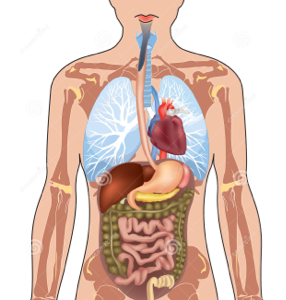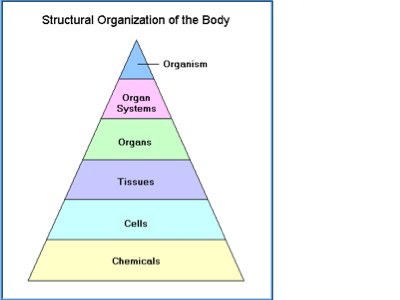Sign up for FlowVella
Sign up with FacebookAlready have an account? Sign in now
By registering you are agreeing to our
Terms of Service
Loading Flow


2. In the human body there are several levels of structural organization. The bottom level is the chemical level. This is where atoms combine to form molecules such as water and proteins. Molecules then form organelles, basic components of the microscopic cells. Cells are the smallest units of living things. The cellular level is where all cells have common functions, but individual cells vary in shape and size. The simplest living creatures are composed of one or single cells, but as organisms begin to get more complex such as human beings, the next level is the tissue level. Tissues are groups of similar cells that have a common function. The four basic types in the human body are epithelium, muscle, connective tissue, and nervous tissue. Epithelium covers the body surface and lines its cavities, while muscle provides movement. Connective tissue supports and protects body organs and nervous tissue provides internal communication by transmitting electrical impulses. An organ is a structure composed of at least two tissue types that performs a function for the body. The organ level is next where extremely complex functions become possible. Each organ performs functions that no other organ can. The next level is the organ system, where organs work together to accomplish something for the body. There are 11 organ systems including cardiovascular, integumentary, skeletal, muscular, nervous, endocrine, lymphatic/immune, respiratory, digestive, urinary, male reproductive, and female reproductive systems. The top or highest level of organization is the organismal level where all structural levels work together and promote life.

